
16 Most Remarkable & Influential European Architects
1. Adolf Loos 1870 – 1933
Adolf Loos was an influential architect from Austria and among the significant European theorists of modernist architecture in the 19th and 20th centuries. He wrote an essay, ‘Ornament and Crime’, in which he promoted the clear, clean and smooth surfaces in architecture instead of facial embellishments of the building facade. He also briefly favoured the modern design ideas of the Vienna Secession, an art movement linked with Art Nouveau.
Early Life & Education
Adolf Franz Karl Viktor Maria Loos was born on December 10th, 1870, in Brno, Austria-Hungary, Czech Republic. When he was only 9 years of age, his father, a stonemason, passed away. The young child developed a hearing impairment, inherited from his father. Due to this deficiency, he suffered all his life, and he developed poor health. His mother carried on the stonemasonry work upon the death of her husband.
Adolf Loos went to various gymnasium schools and a technical institute in the city of Liberec, Czech Republic. In 1889, he graduated from a technical institute in the city of Brno. Later, he attended Dresden University of Technology, but he did not complete his studies and left the university.
Adolf Loos married three times during his lifetime, but unfortunately, all of his marriages ended in separation.
Career & Projects
In 1893, Adolf Loos left for America when he was 23 years old and remained there for three years. He worked for odd jobs there before returning to Vienna in 1896. Adolf Loos stayed in Vienna throughout his life. Influenced by his time spent in America, he focused on architecture. In 1896, he supported the principles of the Vienna Secession for a short period. Later, he declined the adornments and promoted clean, plain and unembellished architecture. Some of his early projects were the interior design of a few cafes and shops located in Vienna.
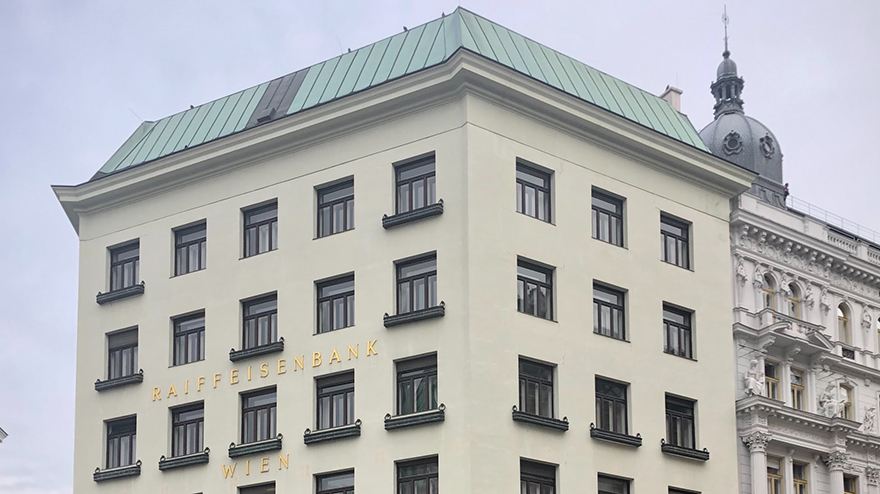
Adolf Loos was one of the pioneers of modern architecture. He employed a new idea of space designing, Raumplan, which allows one to design a building in three dimensions for precise planning. He used this technique of Raumplan in the design of a modern villa, Villa Muller, in Prague, Czech Republic, in 1930 for Frantisek Muller. He worked on several modern architectural buildings. He designed a building, Looshaus, in Vienna, influenced by Viennese Modernism.
Austrian architect Adolf Loos died on 23rd August 1933 in Kalsburg, Vienna, Austria at the age of 62 years.
2. Alvar Aalto 1898 – 1976
Alvar Aalto was a Finnish architect, artist, painter and writer. He designed architecture, sculptures, furniture, glassware and textiles. Alvar Aalto won the RIBA Gold Medal, the Prince Eugen Medal and the AIA Gold Medal.
Early Life & Education
Hugo Alvar Henrik Aalto was born on 3rd February 1898 in Kuortane in the Grand Duchy of Finland of the Russian Empire. His father was Johan Henrik Aalto, and his mother was Selma Matilda. At the age of five, Alvar Aalto went to live in Alajarvi with his family and later moved to Jyväskylä, Finland.
Alvar Aalto got his early education from Jyväskylä Lyceum in 1916 and learned sketching from Finnish painter and artist Jonas Heiska. In 1916, he studied architecture at the Helsinki University of Technology. Due to the Finnish Civil War in 1918, his education was obstructed. He fought at the Battle of Tampere as well as the Battle of Lankipohja.
During 1920, he visited Stockholm and Gothenburg, where he joined architect Arvid Bjerke for a short period. While Alvar Aalto was still a student, he designed his parents’ house in Alajarvi. He resumed his studies and graduated in the year 1921. He got military training from the Hamina Reserve Officer Training School from 1922 to 1923.
Career & Projects
Alvar Aalto designed a project for the Industrial Exposition in 1922 in Tampere. He founded his architectural studio ‘Alvar Aalto, Architect and Monumental Artist’ in Jyväskylä in 1923.
Alvar Aalto got married to architect Aino Marsio in 1924. He shifted his studio to Turku when he won a design competition in 1927 for the building of the Southwest Finland Agricultural Cooperative. He collaborated with Finnish architect Erik William Bryggman. He again shifted his studio to Helsinki in 1933 due to enormous projects in the city.
His wife Aino Aalto died in 1949, and Alvar Aalto got married again to architect Elissa Makiniemi in 1952. He had close contacts with Swedish architects Sven Markelius and Gunnar Asplund.
Throughout his profession as an architect from the early 1920s to the late 1970s, his works represent various styles of architecture such as Nordic Classicism, International Style and modernist organic architecture.
While working on any of his projects, he designed it as a Gesamtkunstwerk where he would design its architecture, interiors, furnishing, lights and glassware. His furniture design was regarded as Scandinavian Modern, emphasising functionality, minimalism and simplicity. He experimented with several manufacturing processes for the use of wood. He explored bent wood and manufactured bent plywood furniture. Alvar Aalto regarded sculpture and painting as “branches of the tree whose trunk is architecture.”
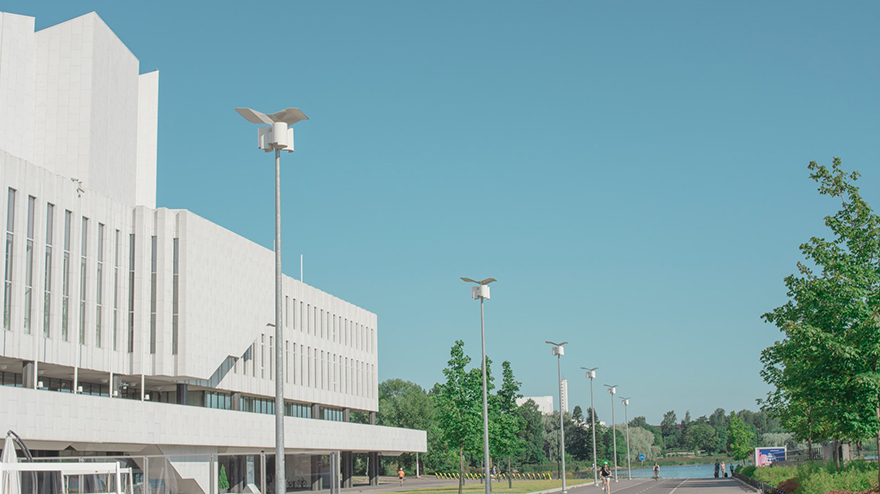
His oeuvre includes Jyvaskyla Worker’s Club 1925; The Aalto House, Munkkeiniemi, Helsinki (1935 to 1936); The Studio Aalto, Munkkeiniemi, Helsinki (1954 to 1956); Alvar Aalto Museum, Jyvaskyla, Finland; summer cottage Villa Flora, Alajarvi; summer cottage, Muuratsalo and Terho Manner’s house, Toysa 1923. Alvar Aalto's architecture also includes a summer villa for a chief police officer, Jyväskylä 1923; Alatalo farmhouse, Tarvaala; building for Jyväskylä Defence Corps; building for Seinajoki Civil Guard House; Finnish Parliament building; University of Helsinki extension; League of Nations building, Geneva, Switzerland and Muurame church.
His other projects are Viipuri Library, Vyborg; Villa Mairea, Noormarkku (Alvar Aalto Villa Mairea); Baker House at MIT, Charles River; Helsinki University of Technology auditorium, Otaniemi; House of Culture, Helsinki; Cultural Center Wolfsburg; Standard Apartment Building, Turku; Paimio Sanatorium; Turun Sanomat Building; Finlandia Hall; Opera House Aalto Theatre, Essen, Germany; Saynatsalo Town Hall; Helsinki Pensions Institute and others.
Recognition
Alvar Aalto was the winner of the Prince Eugen Medal in 1954. He was honoured with the Royal Institute of British Architects - RIBA Gold Medal in 1957, and in 1963, he won the American Institute of Architects AIA Gold Medal.
Alvar Aalto died on 11th May 1976 in Helsinki, Finland, at the age of 78 years.
3. Erno Goldfinger 1902 – 1987
Erno Goldfinger was a Hungarian architect and furniture designer. He advocated the modernist architecture movement and was a prominent figure there. He is well known for designing high-rise residential buildings.
Early Life & Education
Erno Goldfinger was born on 11th September 1902 in Budapest, Hungary. His family had a business in sawmills and forestry that encouraged Erno Goldfinger to study engineering. When he read ‘Das Englische Haus’, a publication written by German architect Hermann Muthesius about domestic architecture in England, his interest grew towards architecture. In 1921, he went to Paris when the Austro-Hungarian Empire fell.
Erno Goldfinger began his architecture education in 1923 at the École nationale supérieure des beaux arts under French architect Leon Jaussely. Soon he met Le Corbusier, Auguste Perret and Mies van der Rohe.
He established his studio in 1929 with a partner while he was still studying and designed several interior design projects as well as a few architectural projects, such as a vacation home in Le Touquet, France. Erno Goldfinger was highly inspired by ‘Vers une architecture’ by Le Corbusier. He got married to Ursula Blackwell.
Career & Projects
Erno Goldfinger went to the United Kingdom during the 1930s. He designed modern architecture homes such as a house at Hampstead in North London and one at Broxted in Essex, before the Second World War. After the Second World War, he worked on an office project for the newspaper ‘Daily Worker’. He also designed the headquarters building for the British Communist Party. He designed primary schools for the London County Council. He built them using pre-cast concrete and infill with brick masonry.
For the Ministry of Health, he constructed a multi-floor office building complex, Alexander Fleming House, in southeast London at the site of Trocadero Cinema, designed by George Coles. He also designed Elephant & Castle.
After World War II, about four million residences were destroyed. As there was a major lack of housing, the British Government commissioned to construction of high-rise residential blocks in the country. Erno Goldfinger was the architect of several tower blocks in England.

Erno Goldfinger designed many tall tower blocks used for residential purposes, such as Balfron Tower with 27 floors, Poplar, East London; Carradale House with 11 floors, Poplar, East London and Trellick Tower, Kensal Town, North West London, designed on the concept of Brutalism.
Erno Goldfinger died on 15th November 1987 in London, England, at the age of 85.
4. Walter Segal 1907 – 1985
Walter Segal was a Romanian architect as well as an educator. He was also a writer. Walter Segal was known for establishing a new means of self-built habitation, the ‘Segal self-build method’.
Early Life & Education
Walter Segal was born in the year 1907 in Berlin, Germany. His father, Arthur Segal, was a Romanian painter. His father, Arthur Segal, was a Romanian artist. Walter Segal achieved architectural education in Delft, Berlin, Germany and the Netherlands with the founders of the Modernist architecture movement.
Career & Projects
His first client was Bernhard Mayer, for whom Walter Segal designed a small holiday home made of wood in Ascona, Switzerland, in 1932. Walter Segal went to London, England, during the year 1936, and he got married to Eva Bradt.
Walter Segal taught architecture at the Architectural Association School of Architecture – AA. He began writing for some trade magazines and also wrote several books. In 1948, Walter Segal had a son named John. His wife died two years after his son’s birth in 1950. Walter Segal designed apartment buildings located in South London. He got married again to Moran Scott in 1963. Due to the lack of space, he dismantled his house and built it again. Walter Segal constructed a temporary house in the landscaped area of the house ‘Little House in the Garden’ using basic surface materials and paving slabs as footing. He explored this method ‘Segal self-build method’, for constructing other houses and encouraged people to build their own houses.
Walter Segal employed basic and modern building materials based on conventional timber framing construction technology with some modifications. There were no wet works required, such as brick masonry and plaster. This led to an ecological and lightweight means of construction with less effort and expertise. Roofs of the structures were largely flat and made up of roof felt laid in several layers, which led to the development of green roofs with grass. The footings of the structure were primarily basic paving slabs. Lewisham Borough Council arranged four building sites for the public to construct their own houses employing the ‘Segal self-build method’. His architecture has been linked to traditional Japanese domestic architecture.
Walter Segal died in 1985.
5. Antti Lovag 1920 – 2014
Antti Lovag was an architect from Hungary. He was influenced by organic architecture. One of the most remarkable projects includes Palais Bulle's design, which is also known as Bubble House.
Early Life & Education
The Hungarian architect, Antti Lovag, was born in Budapest, Hungary, in 1920.
Career & Projects
Antti Lovag went to France during the 1940s and began working with French architect Jean Prouvé. During the 1960s, he joined architect Jacques Couelle, who developed an organic architectural style in the country.
Antti Lovag was highly inspired by organic architecture and employed freely flowing curves in his projects. He designed a massive house, Palais Bulles or Bubble House or Palace of Bubbles, for an industrialist, Pierre Bernard, in Cannes, France.
Antti Lovag died on 27th September, 2014 in Tourrettes-sur-Loup, France.
6. Friedenreich Hundertwasser 1928 - 2000
Friedenreich Hundertwasser was an Austrian architect and designer influenced by the modern movement. He created a unique architecture by avoiding straight lines and standard modular architecture.
Early Life & Education
Friedenreich Hundertwasser was born on 15th December 1928 in Vienna, Austria. He got his education from the Academy of Fine Arts, Vienna.
Career & Projects
Friedenreich Hundertwasser worked on architectural as well as environmental projects. Friedenreich Hundertwasser's architecture includes KunstHausWien, Waldspirale, Hundertwasserhaus apartment building, Vienna, Austria and others.
He died on 19th February 2000.
7. Herman Hertzberger 1932
Herman Hertzberger is an influential and famed Dutch architect as well as a writer. He also taught as a professor previously. Herman Hertzberger won the RIBA (Royal Institute of British Architects) Royal Gold Medal.
Early Life & Education
Herman Hertzberger was born on 6th July 1932 in Amsterdam, the Netherlands. Herman Hertzberger got his education from the Delft University of Technology – TU Delft and finished his graduation in 1958.
Career & Projects
Herman Hertzberger has been the inspiration for the Structuralism movement of architecture in the Netherlands from the 1960s through the 1970s together with the Dutch architect Aldo van Eyck. Structuralism is an architecture movement that emphasises the cultural aspects with their connection to a large system. It is an approach that encourages the creation of building structures by the repetition of basic simple and standard elements interrelated in a way to grow and change in future.
Herman Hertzberger had a belief that architects should not give the whole solution to the design problem instead he should create such a spatial organization so it can be continued or changed in the future. This principle emerged from another movement in the design Participation movement that was started by the Dutch architect N. John Habraken in the year 1961. Participation movement is a principle of design that encourages the participation and involvement of all members such as partners, clients, end users and others in the process of designing to make sure that the final solution fulfils everyone’s requirements and needs.
Some of his significant projects are ‘Diagoon’ Houses; Centraal Beheer Insurance Company, Apeldoorn; Montessori school, Delft; Waternet, Amsterdam and others. He contributed a lot to the growth of Dutch Architecture.
Centraal Beheer Insurance Company, located in Apeldoorn, is now under adaptive reuse and is being transformed into housing and the architect’s main idea of using the building for several purposes in the future is depicted here. Herman Hertzberger pays more attention to the functional approach and interiors of the structures and less towards exteriors and façades.
In 1970, he served as a professor at the Delft University of Technology – TU Delft till year 1999. Herman Hertzberger is the author of many books, such as Space and Learning, Space and the Architect: Lessons in Architecture and Lessons for Students in Architecture.
Recognition
Herman Hertzberger won the Richard Neutra Award for Professional Excellence in 1989. Herman Hertzberger was the winner of the RIBA (Royal Institute of British Architects) Royal Gold Medal in 2012.
8. Piet Blom 1934 - 1999
Piet Blom was a prominent Dutch architect. He is widely recognized for his cube-shaped houses or ‘Kubuswoningen’ in Helmond, Holland.
Early Life & Education
Piet Blom was born on 8th February 1934 in Amsterdam, Holland. He got his education from the Amsterdam Academy of Building Arts under the Dutch architect Aldo van Eyck who was a prominent advocator of the Structuralism architecture movement.
Career & Projects
Piet Blom designed a housing project based on the principles of cube houses or ‘Kubuswoningen’ in Rotterdam, the Netherlands during the 1980s.
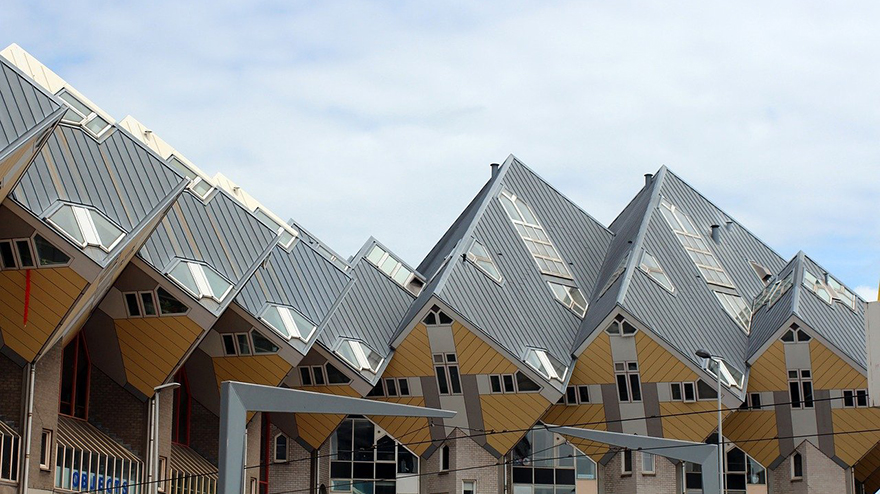
Recognition
Piet Blom was honoured to receive the Dutch Prix de Rome in 1962. Piet Blom died on 8th June 1999 in Denmark.
9. Hans Hollein 1934 – 2014
Hans Hollein was an Austrian architect. He was also an architecture professor. He was one of the advocators of the postmodernist architecture movement. Hans Hollein is widely recognized for his designs for the Albertine Museum and the Haas House in Vienna. He won the Pritzker Architecture Prize in 1985.
Early Life & Education
Hans Hollein was born on 30th March 1934 in Vienna, Austria. He studied at the art school of the Academy of Fine Arts Vienna under Austrian architect Clemens Holzmeister and completed his graduation in 1956.
He studied at the Illinois Institute of Technology in 1959. In 1960, he joined the University of California, Berkeley for his post-graduation studies. Around those times, he met Austrian-American architect Richard Neutra, American architect Frank Lloyd Wright and German-American architect Ludwig Mies van der Rohe. Hans Hollein displayed his architectural works encompassing utopian architecture at the art gallery of Galerie nachst St. Stephan, Vienna in 1963 together with the Austrian architect Walter Pichler.
Career & Projects
Hans Hollein joined some architecture offices in the US and Sweden. He travelled back to Vienna, Austria and established his architectural studio in 1964. Hans Hollein designed the Retti candle shop located in Vienna that got recognized due to its unique façade design built with anodized aluminium. Hans Hollein taught at the Washington University in St. Louis as a guest lecturer. He also served at the Yale School of Architecture – YSOA, US as a visiting professor from 1963 to 1966. Hans Hollein taught at the art academy Kunstakademie Dusseldorf, Germany and later at the University of Applied Arts Vienna.
Hans Hollein also worked as a designer with the Memphis Group or Memphis Milano that was an Italian group of architecture and design established by Ettore Sottsass. Hans Hollein worked for the Alessi Company which produced household items and utensils. He created the design of the stage at the national theatre Burgtheater, Vienna for the Austrian dramatist and writer Arthur Schnitzler’s drama ‘Comedy of Seduction’ in 1980. Some of his famed projects are the Abteiberg Museum, Monchengladbach; the sunken Guggenheim Museum, Salzburg and banking headquarters, Peru, Spain, and Lichtenstein.
Max Hollein is his son who serves as the director at the Metropolitan Museum of Art or ‘the Met’, New York City, US. Max Hollein worked as a director previously at the Legion of Honor Museum; de Young Museum; Fine Arts Museum, San Francisco; Stadel Museum; Schirn Kunstalle and Liebieghaus.
Recognition
Hans Hollein won the Pritzker Architecture Prize in 1985. Hans Hollein died on 24 April 2014 in Vienna, Austria at the age of 80 years.
10. Juhani Pallasmaa 1936
Juhani Pallasmaa is a prominent Finnish architect as well as a writer. He has taught architecture at Helsinki University of Technology as a professor and also served as the dean of the department. Juhani Pallasmaa was among the jury members for the Pritzker Prize for architecture in 2014.
Early Life & Education
Juhani Ulovi Pallasmaa was born on 14th September 1936 in Hameenlinna, Finland.
Career & Projects
Juhani Pallasmaa was the head of the Institute of Industrial Arts, Helsinki and the director of the Museum of Finnish Architecture. Juhani Pallasmaa founded his architectural studio Arkkitehtitioimisto Juhani Pallasmaa KY in Helsinki in 1983.
Juhani Pallasmaa was a visiting professor at Washington University in St. Louis from 2001 through 2003. Juhani Pallasmaa taught at the University of Illinois at Urbana Champaign during 2010 and 2011. He has also taught in other continents of North America, South America, Europe, Asia and Africa. Juhani Pallasmaa is famed for his theoretical works on art, architecture, culture and environmental psychology. One of his notable books is ‘The Eyes of the Skin – Architecture and the Senses’ on the theory of architecture.
One of his significant projects includes the summer house Moduli 225 along with Finnish architect Kristian Valter Alexander Gullichsen. It was industrially constructed between 1969 to 1971 based on the principles of prefabrication, standardization and rationalism and derived from Constructivism. Later his interest moved from Constructivism to the aspects of culture, environment, psychology and phenomenology.
Juhani Pallasmaa worked on various exhibition projects with details that got him recognized as a ‘jewel box architect’. The Kampii Center complex is one of his other key architectural projects in Helsinki, Finland.
11. Ricardo Bofill 1939
Ricardo Bofill is a Spanish architect. Ricardo Bofill was interested in vernacular architecture as well as critical regionalism.
Early Life & Education
Ricardo Bofill Levi was born on 5th December 1939 in Barcelona, Spain. He grew up in a rich family. His father was Emilio Bofill, an architect and builder who got his education from the architecture school, Escola Tecnica Superior d’Arquitectura de Barcelona.
Ricardo Bofill received his education from the Lycee Francais de Barcelone. He travelled a lot which made him interested in vernacular traditional architecture. He designed a summer home, in Ibiza that was completed in 1960.
Ricardo Bofill entered the Escola Tecnica Superior d’Arquitectura de Barcelona, a school of architecture where he got involved in student activism. He was arrested in 1958 and was expelled from his institute and Spain. Ricardo Bofill went to Switzerland where he finished his architecture studies from the Haute Ecole d’art et de design Geneve.
Career & Projects
In 1963, Ricardo Bofill founded his architectural practice Ricardo Bofill Taller de Arquitectura. His studio worked on various experimental projects based on 3D modules such as Gaudi District, Reus; El Castillo de Kafka, Sant Pere de Ribes, Sitges; Xanadu, Calp; La Muralla Roja, Calp; La Cuidad en el Espacio, Madrid; Walden 7, Sant Just Desvern. These projects depicted critical regionalism, an approach to design and architecture that is humane and rejects modernism.
Ricardo Bofill designed symbolic features in his projects that represented French classical architecture. His other projects are La Petite Catherdrale; food marketplace Les Halles, Paris; Les Arcades du Lac, Saint Quentin en Yvelines and Les Espaces d’Abraxas, Marne la Vallee. Ricardo Bofill designed the Antigone neighborhood in Montpellier built of factory-produced prefabricated concrete incorporating classical architectural features into contemporary architecture. He termed this approach ‘modern classicism’. Eventually, he was considered one of the advocates of postmodern architecture.
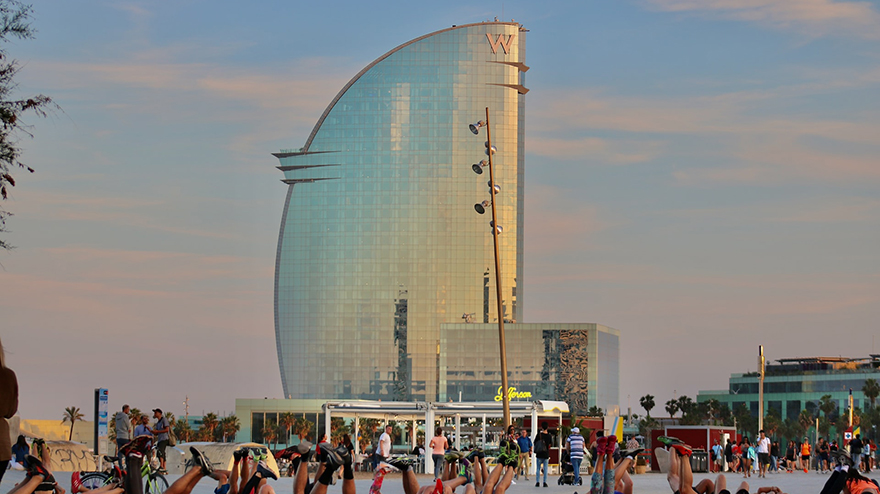
In his projects during the 1980s, he began employing steel and glass with classical elements in his buildings. His projects representing this principle are the National Theatre of Catalonia, Barcelona; Barcelona Airport extension, Barcelona and 77 West Wacker Drive Tower, Chicago. For his parents, he designed a summer home at Emporda, Girona, Spain. In the later projects, Ricardo Bofill avoided the usage of classical features and worked on strongly formal geometry. These projects include Mohammed VI Polytechnic University, Ben Guerir in Morocco and W Barcelona Hotel in Barcelona.
12. Vlado Milunić 1941 - 2022
Vlado Milunić is a Czech Yugoslav architect. He taught at the Czech Technical University in Prague. One of his significant projects is the Dancing House that he designed in Prague, Czech Republic collaborating with Frank Gehry and Vladimir.
Early Life & Education
Vlado Milunić was born on 3rd March 1941 in Zagreb Yugoslavia, now Croatia. He moved to Czechoslovakia with his parents at the age of 15 years. Vlado Milunić studied in Czechoslovakia.
Career & Projects
Vlado Milunić designed several projects in the Petriny housing scheme located in Veleslavin, Prague 6.
13. Rem Koolhaas 1944
Rem Koolhaas is a Dutch architect and urbanist. He is also an architectural theorist and professor at Harvard University’s Graduate School of Design. Rem Koolhaas strongly advocates Deconstructivist architecture. Rem Koolhaas is the winner of the Pritzker Architecture Prize and Royal Gold Medal. The American news magazine ‘Time’ listed Rem Koolhaas among the 100 most influential people around the world.
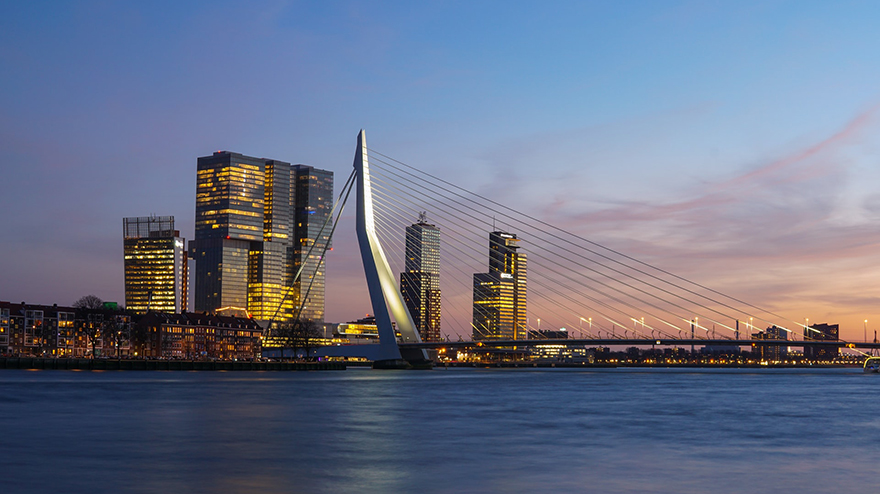
Early Life & Education
Remment Lucas Koolhaas was born on 17th November 1944 in Rotterdam, Netherlands. His father was Anthonie or Anton Koolhaas, a journalist and scenario writer. His mother was Selinde Pietertje Roosenburg. Dirk Roosenburg, his maternal grandfather was an architect who collaborated with Dutch architect Hendrik Petrus Berlage. One of his cousins Teun Koolhaas was also an architect and urbanist.
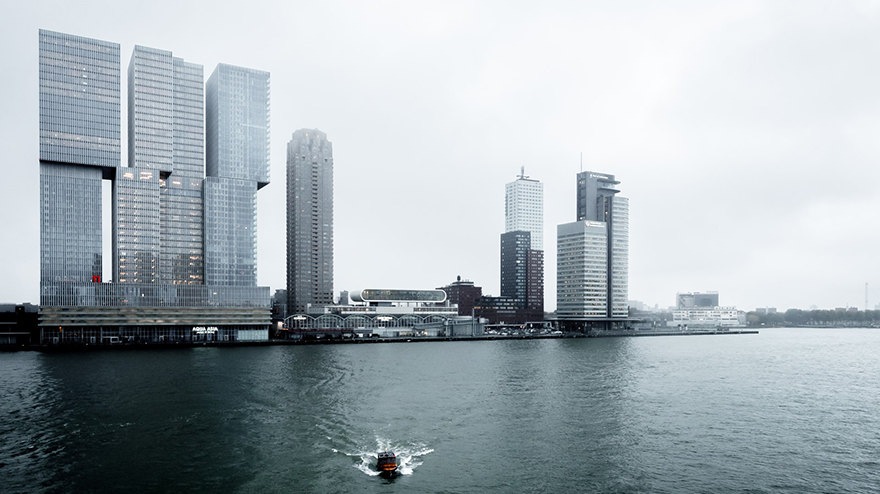
Rem Koolhaas began his studies in 1968 at the Architectural Association School of Architecture, London, England. In 1972, he studied at Cornell University, New York where he met German architect Oswald Mathias Ungers and later at the Institute for Architecture and Urban Studies, NYC.
Career & Projects
Rem Koolhaas founded his architectural firm Office for Metropolitan Architecture – OMA in 1975 in London along with other founding members Elia Zenghelis, Zoe Zenghelis and Madelon Vriesendrop, Rem Hoolhaas’s wife. Zaha Hadid, Rem Koolhaas’s student, joined as a partner later.
Postmodernism was prevalent when several architects participated in an exhibition for the Venice Biennale in year 1980. Italian architect Paolo Portoghesi arranged this exhibition that required architects to design facades. Designs created by OMA, Frank Gehry and Costantino Dardi represented a unique architectural style other than Postmodernism or classical. Rem Koolhaas is well known for his book on architecture and urban designing, ‘Delirious New York: A Retroactive Manifesto for Manhattan’.
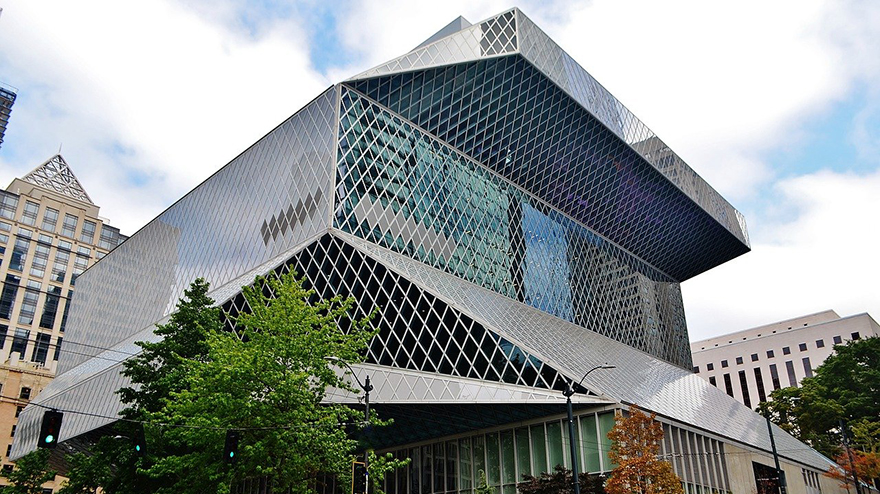
Some of his significant projects are the Central China Television Building, Beijing; Shenzhen Stock Exchange building, Parc de la Villette, Paris; Kunsthal, Rotterdam; Irish Prime Minister residence; Seattle Central Library, Seattle; Embassy of the Netherlands, Berlin; Qatar National Library, Qatar; Milstein Hall, Cornell University; Casa sa Musica, Portugal; McCormick Tribune Campus Center, Illinois Institute of Technology, Chicago and many others.
Recognition
Rem Koolhaas was honoured with the Pritzker Architecture Prize in 2000 and the Royal Gold Medal in 2004.
14. Santiago Calatrava 1951
Santiago Calatrava is a Spanish and Swiss architect, painter and sculptor. He is also a structural engineer. He is widely recognized for the designs of bridges, stadiums, railway stations and museums with organic sculptural masses. Santiago Calatrava won the AIA Gold Medal, the European Prize for Architecture and the Auguste Perret Prize.
Some of his most significant projects are World Trade Center Transportation Hub, NYC, US; Turning Torso, Malmo, Sweden; Milwaukee Art Museum; Olympic Sports Complex of Athens; Opera House, Valencia; Margaret Hunt Hill Bridge, Dallas; City of Arts & Sciences and Auditorio de Tenerife, Santa Cruz de Tenerife.
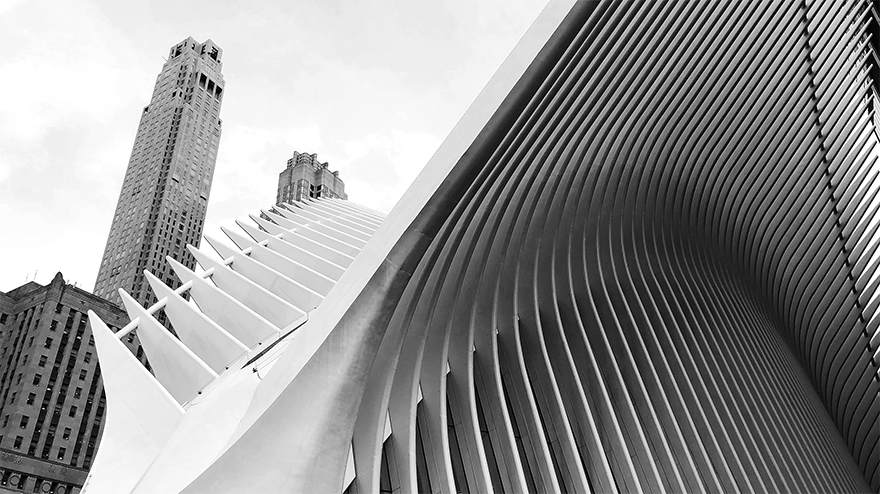
Early Life & Education
Santiago Calatrava was born on 28th July 1951 in Benimamet, Valencia, Spain. He initially studied in Valencia. In 1957, he entered the School of Applied Art to learn sketching and painting. When Santiago Calatrava finished secondary school, he went to Paris to begin his studies at the Ecole des Beaux-Arts but due to student turmoil at the institute, he had to go back to Valencia. He entered the Polytechnic University of Valencia where he completed his architecture studies and later studied urbanism.
While at University, he wrote two books about the vernacular architecture of Ibiza and Valencia. He began studying civil engineering at the Swiss Federal Institute of Technology, Zurich, Switzerland in 1975. In 1981, he completed his doctorate. Santiago Calatrava was inspired by the Swiss engineer Robert Maillart.
Career & Projects
After finishing his doctorate program in the year 1981, he established his firm based in Zurich. Some of his most significant projects are Entrepot Jakem warehouse, Munchwilen; warehouse, Coesfeld Lette; post office, Lucerne; bus shelter, Saint Gall; school, Wohlen; railway station, Lucerne; Zurich Stadelhofen station, Zurich; Bac de Roda Bridge, Barcelona; Lusitania Bridge, Merida; Pedestrian bridge, Athens; Puernte del Alamillo bridge for Exposition 1992, Seville; Gare do Oriente or eastern train station for Lisbon World Exposition 1998; Gare de Lyon Saint Exupery, Lyon airport, Satolas.
His other projects include Montjuic Communications Tower, Barcelona; Brookfield Place, Ontario; Llonja de Sant Jordi, Alcoy; Gare do Oriente, Lisbon; control tower & passenger terminal of Bilbao Airport; Milwaukee Art Museum, Wisconsin; Montjuic Communications Tower, Barcelona; Allen Lambert Galleria, Toronto; Museum of Tomorrow, Rio de Janeiro; Florida Polytechnic University, Lakeland; Peace Bridge, Calgary; Margaret Hunt Hill Bridge; Margaret McDermott Bridge; Oviedo Conference Center; Palace of Congresses, Oviedo and Liege Guillemins railway station, Liege, Belgium
Santiago Calatrava played a significant part in developing Valencia's architecture. He also designed the City of Arts and Sciences, Valencia; Opera House, Valencia; Palace of the Arts, Valencia; Science Museum, Valencia; Athens Olympic Sports Complex; Turning Torso, Malmo; Auditorio de Tenerife, Canary Islands; Velodrome, Summer Olympics 2004. Santiago Calatrava designed a train station, the Oculus, a steel and glass structure at the World Trade Center Transportation Hub, NYC.
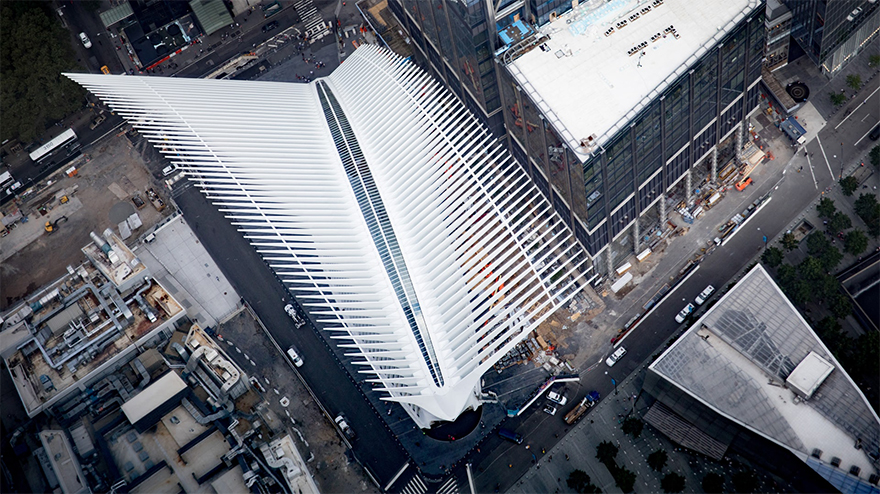
Recognition
Santiago Calatrava won the AIA Gold Medal, the European Prize for Architecture and the Auguste Perret Prize.
15. Francine Houben 1955
Francine Houben is a Dutch architect. She is also a writer as well as has been a professor at Harvard University. Francine Houben is widely known for her architectural designs for libraries particularly the Library of Birmingham which she designed in 2013.
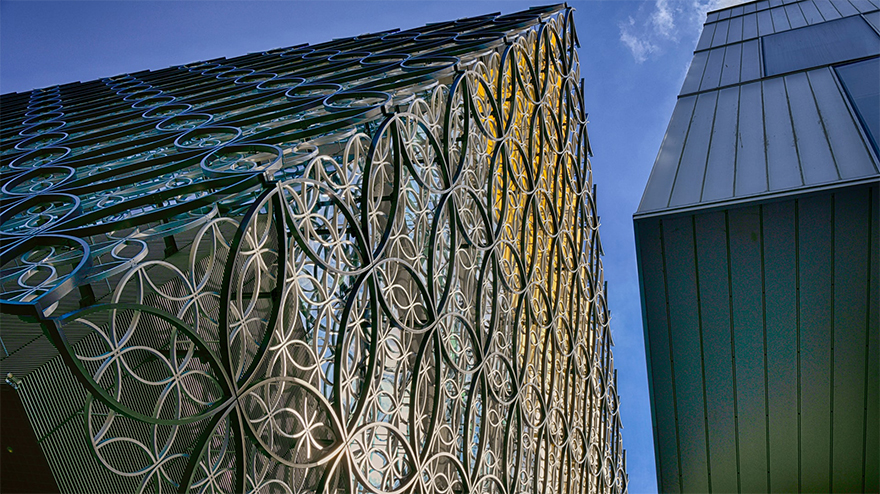
Early Life & Education
Francine Marie Jeanne Houben was born on 2nd July 1955 in Sittard, Netherlands. She studied architecture at the Delft University of Technology.
Career & Projects
Francine Houben established her architecture firm Mecanoo Architecten in Delft in 1984 along with Chris de Weijer, Henk Doll, Erick van Egeraat and Roelf Steenhuis as founding members. She produces geometric architecture and believes in the creation of an architecture that touches all the senses. She played a significant role in the development of European architecture.
Some of her most recognized works are in library of the Delft University, 1997; Birmingham Library, 2013; Martin Luther King Jr, Memorial Library, Washington DC; New York Public Library – NYPL; FiftyTwoDegrees Tower, Nijmegen; La Llotja Theatre and Congress Centre, Lleida; Amphion Theatre, Doetinchem and others. Library of Birmingham is one of her most significant works of international architecture that gained global fame.
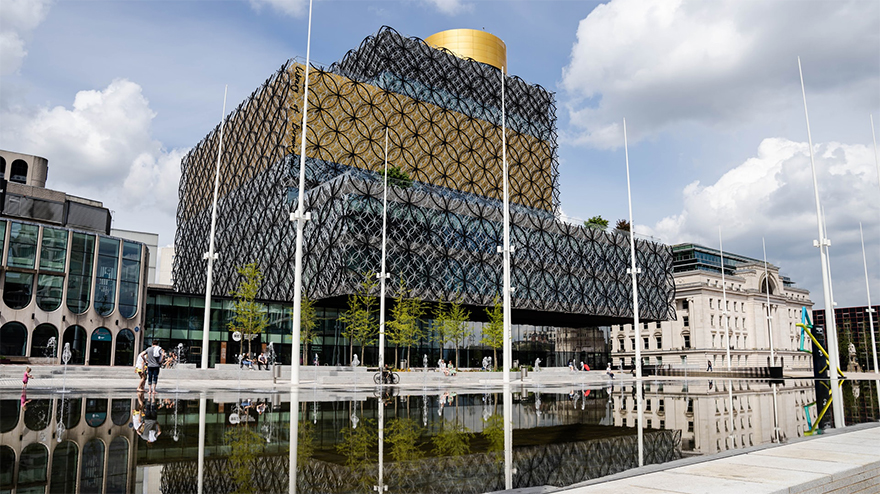
Francine Houben has taught at various institutes in the Netherlands and across the world. During 2007, she served as a visiting professor at research university, Harvard University.
16. Bengt Warne 1929 - 2006
Bengt Warne is a Swedish architect.
Career & Projects
Bengt Warne designed the first Nature House or ‘Naturhus’ in Sweden where he incorporated the greenhouse effect to cope with the cold weather. He constructed a summer house and built a glass structure around it.
EUROPEAN ARCHITECTURAL STUDIOS
3XN Architects
3XN Architects is an architectural studio based in Copenhagen, Denmark. The company has other design studio branches in other parts of the world like as Stockholm, Sweden; New York, America and Sydney, Australia. 3XN Architectural firm won the Nykredit Architecture Prize, the most reputable Danish architecture award, in 1988. 3XN Architects also received RIBA Awards in 2005, 2007 and year 2009 for the remarkable projects it designed.
3XN architecture company was formed by Kim Herforth Nielsen, Hans Peter Svendler Nielsen and Lars Frank Nielsen as ‘Nielsen, Neilson and Nielsen’ in the city of Aarhus, Denmark in 1986. It was later known as 3X Neilsen. As previous partners left the firm, Kim Herforth Nielsen became the principal architect of the studio with its other partners. It is now known as 3XN Architects.
3XN Architects has designed projects throughout the world. The firm got recognition when it designed the Embassy of Denmark in the city of Berlin, Germany in the 90s. It was finished in 1999.
In 1997, Danish Architects won the competition for Muziekgebouw Concert Hall located in Amsterdam, The Netherlands. 3XN architecture firm won the competition for another project Museum of Liverpool, Liverpool, England in 2005. It was completed in 2011.
3XN Architects create daring designs that add up to the positivity of the built environments for living and working. Some of the other impressive architectural projects designed by 3XN architects are Tivoli Concert Hall for Tivoli Gardens, a pleasure garden and an amusement park, Copenhagen, Denmark 2005; Headquarters for Sampension, Copenhagen, Denmark 2005; Orestad Gymnasium for Orestad High School, Copenhagen, Denmark 2007; Concert Hall & Research Centre for the University of Southern Denmark, Alsion, Sonderborg, Denmark 2007; Bryggen Shopping Mall, Vejle, Denmark 2008; Headquarters for Saxo Bank, Danish Investment Bank, Copenhagen, Denmark 2008; The Blue Planet, Den Bla Planet, National Aquarium Denmark, Kastrup, Copenhagen, Denmark 2008; Headquarters for Horten, a law firm, Denmark 2009; Horsens Stadium, Horsens, Denmark 2010; Middlefart Savings Bank, Middlefart, Denmark 2010; Headquarters for KPMG International Limited, 2011; Bella Sky Hotel, a four-star hotel, Copenhagen, Denmark 2011; UN Building, Copenhagen, Denmark 2013; Royal Arena, Copenhagen, Denmark 2017 and Copenhagen Children’s Hospital, Copenhagen, Denmark 2017
3XN architects have not only designed projects in Denmark but their stunning projects are spread across the world such as Swedbank Headquarters, Stockholm, Sweden; AMP Centre, Sydney, Australia 2014; Sydney Fish Market, Sydney, Australia 2017; Theatre & Jazzhouse, Molde, Norway; Buen Kulturhus, a multi-purpose cultural centre, Mandal, Norway 2012; Grove Towers, Mumbai, India; Dream Center, Shanghai, China 2014; Gemeentenhuis Nieuwegein, Nieuwegein, the Netherlands; Aqualuna, residential development, Toronto, Canada; Vertical Village, Toronto, Canada; No10 residences, Vienna, Austria and Tilia Tower, hotel, apartments & retail, Lausanne, Switzerland.
3XN Architects founded a new department in its firm in 2007 for research and development This R&D department, known as GXN, works on sustainable architecture, green materials and sustainable technologies. GXN designed the sustainable Louisiana Pavilion for the Danish Art Museum, in Louisiana, America. It was built using a biocomposite, a composite material made of some suitable resin reinforced by natural fibres. GNX department works for the principles of Cradle to Cradle, a design tactic influenced by nature.
Anne Holtrop
Anne Holtrop started his architectural studio in the year 2009. His firm has its studios based in Amsterdam, the Netherlands and also in Muharraq, Bahrain. Some of the most influential projects designed by the firm are the National Pavilion of the Kingdom of Bahrain, Milan, Italy; Museum Fort Vechten; Maison Margiela Stores, London, UK; CERN exhibition pavilion, France.
Bruther Architecture
Bruther is one of the top architecture firms based in Paris, France. It was established in 2007 by Alexandre Theriot and Stephanie Bru.
Dieter Vander Velpen
Dieter Vander Velpen is an architecture and interior design company based in Antwerp, Belgium.
Greenline Architects
Greenline Architects is an architecture, interior design and planning studio based in Savannah, Georgia.
Leopold Banchini Architects
Leopold Banchini Architects is an architectural and design firm with its studio in Geneva, Switzerland.
Maio Architects
Maio Architects is an architecture company located in Barcelona and New York
Mono Architects
Mono Architects is an architecture and interior firm based in Ukraine.
Mudd Architects
Mudd Architects is an architecture firm based in Barcelona, Spain, that focuses on sustainable architecture using natural green building materials and new technologies.
Ng Architects
Ng Architects is one of the top architecture firms based in Vilnius, Lithuania.
OMA Architects
Office for Metropolitan Architecture OMA Architects is a widely known architectural practice located in the Netherlands, Australia, New York, Hong Kong and Doha. Rem Koolhaas is one of the founding members of OMA.
Orange Architects
Orange Architects is an international architecture, planning and design firm based in Rotterdam, the Netherlands.
Parti Architecture
Parti Architecture is an architecture and design company in Chania, Crete, Greece.
Paul de Ruiter Architects
Paul de Ruiter Architects is a sustainable architectural firm based in the Netherlands. Villa Kogelhof is an ecological villa designed by Paul de Ruiter Architects on the concept of futuristic architecture. Villa Kogelhof is located in Kamperland, Noord-Beveland, the Netherlands.
Sergey Makhno Architects
Sergey Makhno Architects is an architecture, design and art firm based in Ukraine.
Superstudio Architecture
Superstudio was an architectural design practice based in Florence, Italy. It was established in 1966 by Cristiano Toraldo di Francia and Adolfo Natalini. It was influenced largely by the Radical architecture movement.
Tamizo Architects
Tamizo Architects is an architecture and interior design firm based in Lodz & Warsaw in Poland and New York & Connecticut in the USA.
UN Studio
UN Studio is a Dutch architecture studio established by Caroline Bos and Ben van Berkel.
Haussmann Architecture
Baron Haussmann was an influential French official. Baron Haussmann, or Georges Eugène Haussmann, was born on 27th March 1809. He worked as a prefect, a representative of the department of the Seine. He was elected by Napoleon III to execute a large urban redevelopment of new parks, public spaces and roads in Paris. This urban renewal is widely known as ‘Haussmann’s renovation of Paris’. He played a significant role in the development of Parisian architecture. Baron Haussmann died on 11th January 1891 at the age of 81 years in Paris, France.
House of Architects
House of Architects is an architecture company based in Amsterdam, the Netherlands.










